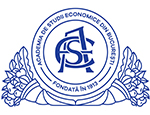Articles on Issue Theme

Ana-Maria HOLOBIUC
Academia de Studii Economice din Bucureşti

Bogdan MIHAI
Universitatea “Babeş-Bolyai” din Cluj-Napoca
The concept of convergence has gained more and more attention with the deepening of the European integration project and the accession of countries with lower economic performance than the EU average. On the one hand, reputed analysts and observers of the integration process expected that the completion of the single market, coupled with the adoption of common policies, would favour convergence by allowing poorer countries to reach the level of development of Western European countries, by accelerating capital flows to low-income countries. On the other hand, some voices argued that the introduction of the single currency would reduce the pace of the catching-up process. However, the Community’s economic landscape continues to be dominated by significant gaps between the member states, which have been amplified with the outbreak of the economic and financial crisis, calling into question the objective of achieving a lasting and sustainable convergence. The purpose of this paper is to study whether the real convergence process is faster in the new member states than in the old member states of the EU. Based on the theoretical and empirical research, we reveal that, at country level, the new member states have registered a higher pace of convergence than the old ones. Nevertheless, we find that, at the regional level, the economic performance is not equally distributed. The conclusion of this paper can be relevant for third-party European states, which aim to join the EU in order to improve their economic performances, but also for the old member states, for which it has become increasingly difficult to create and maintain long-run economic growth.
ŒCONOMICA no. 3-4/2018
Keywords: European Union, real convergence, new member states, economic growth, regional disparities
JEL: O40, O52, O57
Real Convergence in the European Union: Myth or Reality?
Select Issue:
Archive
Octavian-Dragomir JORA
Academia de Studii Economice din Bucureşti

Mara Andreea TUDOR
University of Chicago

Cătălin MURARAŞU
Academia de Studii Economice din Bucureşti

Ramona Iulia DIEACONESCU
Academia de Studii Economice din Bucureşti

Maria GHEORGHE (NIŢU)
Academia de Studii Economice din Bucureşti

Sorin-Nicolae CURCĂ
Academia Română

Revista ŒCONOMICA

Authors

